Team members
Over and Out!
We can’t believe it, our internship with RadiusOnline is coming to an end. It’s our last day as interns, and we are so sad to say goodbye. We hope you have enjoyed all of our posts along the way and thank you for staying tuned for the ride!
Now, some final thoughts from your friendly Spring 2018 interns:
Anna:
I can’t believe my time at RadiusOnline is already coming to an end. I am beyond thankful for the time I have spent here learning new things and the AMAZING people I’ve met along the way.
Everything from writing blog posts to learning new things about the digital marketing world to visiting the Chick-Fil-A headquarters, I’ve loved it all! I remember walking in on the first day, nervous, overdressed and unsure about how the semester was going to go. Over three months later and I feel like I have been a valuable part of the RadiusOnline team and was greeted with open arms every step of the way.
I sure am going to miss everything RadiusOnline has to offer when I leave…my little desk with easy access bowl of chocolates, my fellow interns and co-workers, the silly daily conversations in the office, and of course the catered Friday lunches. Thankfully, I will be walking away with so much insight and knowledge beyond what I ever expected to achieve from this role. But for now, onto my next chapter…over and out!
Brittney:
It’s crazy to think how quickly this semester came and went. It literally feels like just yesterday when I accepted the position. Being able to learn as much as I have in the last few months is amazing. During my time here, I enjoyed going to the Braves game (in a suite!), the Chick-fil-a tour, catered Friday lunches, and most importantly learning from some really smart people.
I want to personally thank Vu, LanNhi, and Katherine for this opportunity. Also, a special shout out to Whitney! One of the sweetest people I have ever met…Ever. I’m truly grateful to have been given the opportunity to work here. Anyone who is considering applying, just do it. You’ll learn so much and enjoy many perks and surprises but most importantly great company. Thanks for everything y’all!
Chris:
Radius Online is amazing! I’ve had my fair share of internships and this program was the absolute BEST! When interning here, you actually learn and obtain new skills that will help you for your future career. I am so lucky to have worked with these amazing people and my fellow Interns. ***Oh, and the free Friday lunches are a bonus***
When I interviewed for the Spring Intern Position I knew that I wanted to work here and be part of this amazing company culture. I’m so thankful for everyone who has taught me while being here.
My advice to you: APPLY ! APPLY!! APPLY!!!! You won’t regret it!
Subhasree:
“How lucky I am to have something that makes saying Goodbye so hard” These four months of my internship has given me a lot to learn, more than just PHP. RadiusOnline has given me new Friends and an extended family. Many inspirational people around me from my mentor Joshua, inspiring Vu (exceptionally inspirational thoughts), very caring LanNhi, always warm welcoming Emily- Kathy -Whitney, always loving buddies Irian –Swan- Vinny-Jenny, finally my awesome friends Anna –Britney- Chris and everyone in this office Viri-Henry-Dalton- Isak-Montana…. .
Special mention my mentor Joshua has been the best in helping me learn GIT ,PHP , Symfony…“break the codes to learn more.” I will proudly tell I have been around awesome people who do awesome things. It was fun learning!!!!
8 Things to Do Before You Travel Abroad
Traveling abroad is all fun and games until you actually have to start preparing for it. It’s easy to become overwhelmed at the sight of a long checklist and you may even see the procrastination start to kick in. No need to stress, I’ve compiled this helpful checklist of tasks that you need to consider before you leave for your next trip:
1. Get a passport
If you’re traveling anywhere outside of your home country, you are obviously going to need a passport. If you already have one, check to make sure it hasn’t expired. Don’t wait too long to get your passport because it could take as long as EIGHT WEEKS for your passport to be in your hands!
2. Book any flights and hotels
To ensure you get the best deals, make sure to book your flights, hotels, or Airbnbs well in advance. The further in advance you purchase your tickets, the cheaper they cost. Consider looking into booking through a travel booking website such as Travelocity or Expedia to ensure you get the best deals.
Pro tip: the best days to buy plane tickets are Tuesdays and Wednesdays. That’s when tickets are usually cheaper.
3. Print extra copies of important documents
Your mom will probably bug you about this one, but it’s important to print off some extra copies of your important documents such as your passport and ID to keep with you on your trip. This is just in case of an emergency if you somehow lose track of them. You don’t want to be stranded in a foreign country unable to leave if your passport gets lost or stolen.
4. Figure out all things money
Do you know what the conversion rate is? Will your debit or credit card work in the country you are going to? Does your bank or credit card provider know you will be leaving the country? These are some critical questions you need to know the answers to before you leave. Always make sure to have some local cash on you for places like trains or buses, so stop by an ATM once you get to your destination and take some cash out. It’s also important to let your bank know where you’re going because they might think you are encountering fraud when they get notice that your card is being used to buy pasta in Italy. So, to avoid being locked out of your account, just call your bank to let them know that you’re going overseas.
5. Communication
While you are away, you will want to be able to communicate with your family and friends back home. It’s important to figure out if your phone will work overseas and determine how much it will cost you. Some phone services offer phone plans specifically for overseas travel which can include calls, texts, and even data usage. If you don’t want to spend much on phone charges, consider downloading a free messaging and calling app such as WhatsApp or Viber.
6. Pack accordingly
Traveling to a new country means you will experience different culture with new customs. Do some research and make sure to pack clothes that are appropriate for the places you are traveling to. For instance, if you are going to be visiting Notre Dame Cathedral in France, you may want to think twice about wearing those booty shorts or sleeveless shirts. There may not be an enforced dress code, but it’s important to be respectful in a place of worship and know that they might deny you entry if your clothing choices are inappropriate. On a lighter note, you should also consider what the weather will be like when you’re there and pack accordingly. Dressing in layers is always a good idea for traveling abroad!
7. Get charger adapters
Something you might not think about right off the bat is whether or not you will need an adapter or power converter for your chargers. Pretty much any country you go to you will need to get some sort of adapter for your chargers because they have different plug outlets. Luckily, you can pick some up at practically any store such as Target or Walmart. This is also a good time for you to make sure you have all the chargers you will need throughout your trip for your phone, camera, laptop, etc.
8. Download maps and apps before you leave
How will you know where to go once you get to your destination? On my previous trips abroad, I found it helpful to download maps and travel guides to my phone before I departed from America. That way, I could figure out where to go the moment I arrived. Some people still use paper maps, but you may be better off using some technology to guide you!
Bottom line
Give yourself enough time to do all of the tasks above. Traveling abroad can be stressful if you don’t prepare yourself well enough. Stick to these tips when planning your next trip to ensure yourself an easy travel. Bon voyage….and take lots of pictures!
6 Tips to Achieve and Maintain Work-Life Balance

We all know that working is essential to life. We need money to buy food, pay for housing, and of course get those Netflix subscriptions. It’s becoming easier and easier to put in extra hours by working from home or staying in the office after hours to finish up a project. However, plenty of people fail to realize that we should work to live not live to work. No one ever looks back on life and wishes they would have worked more. No one. For the most part, most people will say that work-life balance is important to them, but many have no idea how to actually achieve it. So, here are some tips on how to achieve and maintain work-life balance.
1. Leave work at work
First and foremost, whether you’re the boss or the employee, work should be left at work. A way to go about making sure you don’t bring work home with you is to create a transitional routine that helps your brain disconnect from the workday. Some things to consider doing are exercising, listening to music or podcasts during your commute home, or even making a physical list of what needs to be done at work the next day and forgetting about it until you return back to your job. The whole point of all of this is to let go of the workday stress so that you won’t bring it home with you.
2. Make time for hobbies and passions
Plenty of people are quick to put their hobbies and passions aside in order to stay that extra hour at work to put those final touches on that presentation or finalize that project that’s been put on the back burner one too many times. However, this isn’t ideal. Take the time to paint, read, be a mentor, play video games, or whatever it is that makes you happy. Doing the things you are actually passionate about will bring fulfillment to your life. You’ll have something to look forward to after work. Also, doing what you love will help decrease stress.
3. Have a social life
Please. Please. Pleaaase make sure to actually have a social life. Don’t blow off plans with your loved ones because you’re staying late at the office again or because your work day was long and stressful. Being around loved ones can help take your mind off of work, and you’ll get to create new and fun memories with them. Some ways to make sure you maintain your social life would be to attend regular activities such as art classes, book clubs, or even weekly dinners with friends. You can even plan fun activities to do on a weekday so that you’ll have something to look forward to midweek, and you won’t even have to wait until the weekend to do something exciting!
4. Set work goals
It’s important to set some goals when it comes to your job. For example, write down what you need to do on a weekly basis, and then make tasks from that goal list and do a few of them each day. This way, you’ll be able to leave work and feel satisfied with finishing the tasks you planned for yourself. Just make sure to be realistic about what you can and cannot finish in a day and don’t wear yourself thin. If you happen to not finish your daily goals, put the leftover tasks on your to-do list for the next day and finish then first thing in the morning.
5. Set life goals
Just like with work goals, you should set some life goals. Make those plans to travel become a reality. Plan to buy a home or relocate to a new city or even a new country. Learn something new. Simply make sure you’re setting goals for yourself outside of work. The objective is to always be striving for personal growth. Take into consideration what is important to you in your personal life, and then make career choices based on those decisions. Only you can decide what you want for your life, so get to figuring all of that out and make it happen.
6. Make time for you
Last and certainly not least, make time for yourself. Although family, friends, and work are all important, your me time is equally as important. Take time to do something that you enjoy such as watching that TV show you’ve been meaning to watch, going to a new restaurant alone, taking a walk in the park, or even simply just be alone and do nothing. Set aside time to make sure you are taken care of whether that is mentally, physically, emotionally, and/or spiritually. Being in tune with yourself will help you maintain a healthy work and personal life. So, don’t skimp out on or feel bad for wanting that alone time.
Overall, if work-life balance is important to you, make sure to put in the effort to actually achieve it. You don’t have to wait to start incorporating some of these tips in your daily life. Choose one and start today!
8 Ways to Make Your Emails More Professional
Regardless of the different platforms used in the workplace today, email is still considered one of the most used professional communication tools. Over the years, the digital world has changed the way that we communicate with our peers, both socially and professionally. It’s tempting to type out a quick text message, send a silly Snapchat or Facebook message to get your questions answered and points across, but it’s just not the same as a good, old fashioned email!
Don’t worry, whether you’re new to the professional world or you just want to perfect your corresponding techniques with other professionals, these tips can help you become an expert in email etiquette!
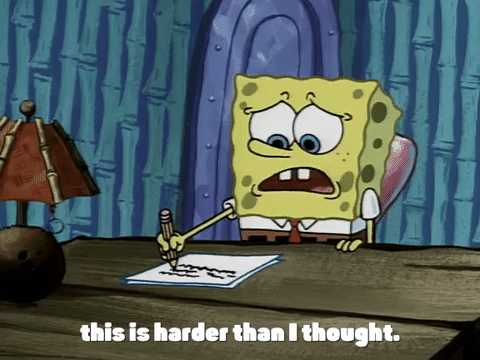
Briefly introduce yourself
When emailing someone professionally, you can’t assume that they know or remember who you are. If you think they might not remember you, remind them who you are by beginning the email with a quick introduction to help them understand why you might be emailing them. This also helps the reader connect to you on a slightly more personal basis.
Concise subject line
The subject line is the first thing your recipient sees before opening up an email and can help catch the reader’s attention. It’s important to make sure the subject line is simple and understandable, but not too vague. If it’s too vague, it can end up looking like spam. It should be short and to the point and relatively descriptive of what is discussed in the email.
Know your audience
Before writing the email, think about who will be reading it. Is this person more on the formal side or are they a little more informal and laid back? You should write in the language that they would write in. (Note: if you are unsure of your recipient’s writing style, it’s wise to go with a more formal tone. You know what they say… it’s better to be overdressed than underdressed!)
Keep it simple
Making your emails simple and easy to read is an essential, yet often overlooked aspect of email writing for many people. According to Inc., white space is your friend when it comes to formatting. Spacing out different points and paragraphs throughout your email can make your message clean and easy to follow. It’s also important to keep your emails concise and stick to one main topic so you don’t overwhelm the reader. Following these rules will allow the recipient to easily scan and digest your email’s information.
Always proofread
There’s nothing that says “unprofessional” like typos and styling errors. Even if you don’t think there could possibly be any mistakes or typos in your email, let’s face it… there probably are. Just read over your message before clicking the send button. It may even be helpful to wait to insert the recipient’s email address until after you have finished writing and proofreading your email. I know it’s tempting to just type out your email and immediately hit send, but save yourself and proofread your writing.
Include a signature
After you’ve completed your email, it’s customary to conclude with a signature. It allows your recipients to get a final sense of who you are and help them learn more about you. Typically, your signature should include your name, company name, and any other contact information like your phone number or links to your social media accounts. If you’re composing an email on your mobile device, Business News Daily recommends deleting the “sent from iPhone” message at the bottom of your email. It can make you seem less professional.
Always address the person you’re emailing
Maybe you have been emailing back and forth with a coworker or future employer three or four times now and you are getting tired of starting every email with some variation of “Good afternoon Mr._____,” or “Hello Mrs.______,”. It may seem repetitive, but it is more professional to continue addressing your recipient throughout your email thread rather than stopping two emails in and immediately spewing out information at the beginning of your emails.
Avoid using abbreviations, emojis or slang
Using words and phrases meant for texting and informal social communication in your professional emails is not in your best interest. Abbreviations anywhere from “legit” to “totes” should be left out and replaced with the real word. If you type like an adult, you will be perceived as one. This also includes the use of emojis. There is a time and a place for your favorite emojis…but definitely not in a professional email.
Writing a professional email can be difficult and frustrating, but hopefully with the help of these eight tips and some practice, you can email like an expert in no time!

Make Amazon Stop Ruining Christmas Again
You thought you’d found your brother the PERFECT surprise Christmas gift. He’d never think to ask for a psychedelic Grateful Dead afghan for his new apartment, but you just knew once he unwrapped that comfy throw, he’d never be able to imagine his life without it again.
That is… until he was ready to buy you a gift and logged onto the shared Amazon Prime account that you used to order his.
We’ve all been there. It’s not frugal for more than one member of a family to pay for Amazon Prime, but it seems impossible to keep any purchase a secret.
Whether you’re shopping for people who share your account, or just want some privacy, here are 5 preventative measures to take to keep Amazon from broadcasting your purchase information to the entire household.
Turn Off Alerts

First, turn off all email or text message alerts connected to your account if the account owner is okay with not being notified of every purchase. This way, surprises for the person whose email and phone number are linked to the account aren’t ruined before your package even arrives. To do this, update your preferences in your account, under “Email alerts, messages, and ads.”
Take Advantage of Amazon Household
Amazon Household allows you to add an additional Amazon account to a Prime membership. You can order things on your personal Amazon account/login, even if you aren’t the one with Prime. The things you shop for on your personal account will not show up on the Prime holder’s account while you get to reap their Prime benefits.
To attach your account, go to the Prime owner’s account page, then “Amazon Household,” under “Shopping programs and rentals.” This won’t solve all problems if you have several people using the Prime account, but it’s the perfect solution for a duo.
Stop the Recommendations
Tired of your entire family being prompted to buy tampons, makeup remover and dandruff shampoo after your most recent purchase? Under “Your Recommendations,” go to “Improve Your Recommendations.” You can manually check the “Don’t Use for Recommendations” box next to any past purchase you don’t want reappearing.
Turn Off Your Browsing History

Next, toggle over “Browsing History,” located in the top left corner of your screen. Click “View and Edit,” then delete all browsing history. Next, click the orange and white switch to turn your browsing history off completely. The only catch to this is that the browsing history only remains off on the device you’re currently using, so you’ll have to corral the fam into following these steps on every device that they use.
Archive Your Orders
As a last resort, you can somewhat hide your Amazon orders. This is done by archiving specific orders. The order will not be completely deleted, but it will be moved to an archived area and will be hidden better from snoops. To do this, go to your orders and select “Archive Order,” next to whatever you wish to hide. This is another tip that is most effective when all sharers are doing it, because you don’t want to see something meant for you when you go to the orders page to archive what you purchased.
There are quite a few hoops to jump through to gain privacy on a shared Amazon Prime account. However, if you can convince your household to agree to take these preventative measures during the holiday season, the fun surprises will be worth it!
5 Reasons to Take a Break from Instagram
Check out this viral video: Social Media vs. Reality

We’ve all done it. Spent hours on Instagram mindlessly scrolling through your feed. Posted a picture and refreshed it endlessly to see the amount of likes you get. Compared yourself to attractive, successful people doing cooler things than you. Thought about a caption for way longer than you probably should have.
It’s an unrelenting, sometimes even dangerous, epidemic sweeping across Millennials today. We’re always on our phone. We can’t help it. Everyone’s on Instagram. We want to share our experiences, we want to connect with others, we want to feel liked.
And this is totally normal.
But the more we refresh, like, and post, the more we invest our happiness into something as fleeting and trivial as Instagram.
We contort our real lives into a highlight reel that showcases our most perfect, staged, beautiful moments. We show it off casually like it’s our everyday life, but in reality, they’re well-thought-out moments we’ve planned in our heads to satisfy this portrayal of a perfect person we want everyone to see.
That’s why taking a break from the most addicting social media app, Instagram, can do wonders for your mental health, self esteem, and overall happiness.
After all, the saying goes, “life is what happens between wifi signals.”
Here are 5 things that happen after you delete Instagram:
1. You stop comparing yourself. You stop being so hard on yourself, because you’re not constantly reminded of other people’s success, accomplishments, or fun things they’re doing. You’re focused on yourself and the totally worthy, everyday things you’re doing instead of someone else’s once-in-a-while cool moment.
2. You stop missing out on experiences while you’re on your phone. 38% of people have missed out on a life moment while busy looking on their phone (OnePoll, 2016). People spend so many dinners, dates, or night outs checking their phones. They spend so much time connecting with the people through their phones, they forget about the human connections right next to them.
3. You become more productive, especially in the mornings. You don’t lie in bed for 10 minutes after your alarm goes off checking your Instagram until you reach the last familiar post, which is usually “7 hours ago.” The start of the day is so important. It sets the tone for how the rest of your day is going to go. Without Instagram, you don’t start your morning comparing yourself to people and everything you missed while you were asleep.
4. You are where your feet are. You start being more present. You look around more. You see how rich the colors of the sunset actually is, because you’re not looking at it through a camera. You do more things that make you forget to check your phone. AND you don’t feel the need to document it for validation that you are doing something cool. In fact, 41% of people choose vacation locations based on what would look good on social media (OnePoll, 2016). By disconnecting, you stop worrying about what pictures and captions to post, because you’re here and you’re alive and this moment is more precious than you think.
5. You stop caring about what people think about you. This one’s a hard one. And it doesn’t happen overnight. It happens over time, when you slowly start realizing you are much more important and valuable than a number or statistic on your social media account. The real you is so much better than the Instagram you.
As always, it’s easier said than done. Instagram is still such an incredible way to connect with the people around you (if you don’t let it influence you too much). But, if you ever feel like taking a break, I promise your future self will thank you. Check out 5 Ways You Can Disconnect to Reconnect for tips for weaning off social media.
5 Ways to Succeed at Your New Job
Starting a new job can be super exciting, but it can also be a little intimidating. How do I prove myself to my coworkers/bosses? How do I acclimate to the culture as quickly as possible? What if I don’t know how to do everything? All of these concerns are completely normal to have when beginning a new job. But starting a new position doesn’t have to be nerve wracking. We here at RadiusOnline have come up with 5 ways to help you shine during the first few weeks at your new job.
Take Notes

You will probably be going through some form of training when you first start working at your new job and taking notes can be helpful to your training for several reasons. Taking notes can help you better retain the information you’re receiving as well as serving as a guide later on if any part of your training slips your mind. Taking notes during training also shows the person training you that you care about what they have to say and helps you make a great first impression.
Stay Off Your Phone

Someone once told me that your employer shouldn’t even know you have a cell phone for the first 90 days at a new job. Technology is a pivotal part of our everyday lives, but make sure that you try to stay off your phone while at work. The last thing you want is to be on your phone every time your boss walks by your desk. It helps to put your phone somewhere out of sight so you’re not tempted to use it and you can better focus on the tasks at hand. If you absolutely have to make a call or send a quick text just step outside the office to do so.
Be Positive

There is nothing worse than working with someone who has a horrible attitude. So don’t be that guy! Having a good attitude about work not only creates a better work environment for everyone but it will also make you happier about your job or just your day in general. Make sure that when at work you have a positive attitude, smile, and show those around you that you are happy and excited to be there.
Ask Questions

A lot of people are worried about asking too many questions at their new job, but asking questions is actually a really great thing to do. Asking questions isn’t a sign that you’re unintelligent or not catching on quickly, but instead shows employers that you’re not afraid to put yourself out there to make sure things get done. By asking questions, you’re getting the answers you need to get your job done instead of wasting time trying to figure it out yourself. Remember- you’re brand new to this job. No one expects you to be perfect at it on day one.
Get to Know Your Coworkers

You’ll be spending 40 hours a week with these people, so get to know them! Getting to know your coworkers gives you a group of people who can help show you the ropes around the office. You’ll also start forming relationships that could potentially help you in your professional life. And who knows, your work friends may become some of your best friends!
Starting a new job is an exciting opportunity to grow professionally and if you follow these five tips you’ll be on your way to having huge success at your new job. Congrats on your new position and best of luck!
Goal Setting Tips For Any Lifestyle
I’d like to consider myself somewhat of a Master Goal Setter. This may be due to my type-A personality, overwhelming need to always have a plan, and perfectionist tendencies. I’m already thinking about the best ways to stay involved and social when I retire (I’m 23). It can be a lot.
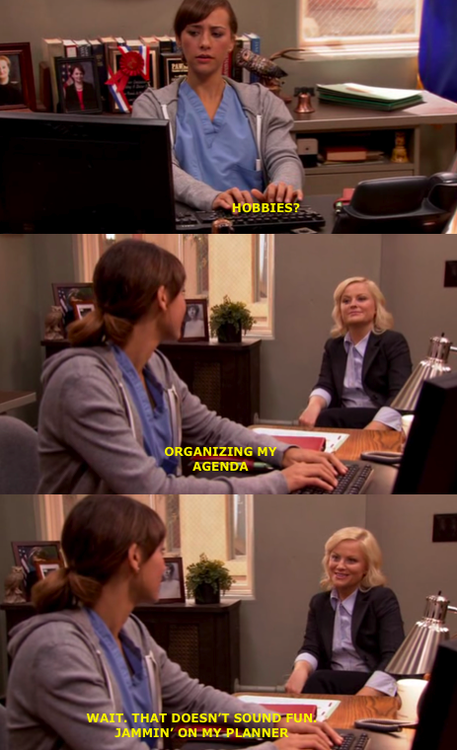
I recognize that there are some of you out there living on the opposite side of the coin: taking life one day at a time, no thoughts or concerns about the future, perfectly happy living in the moment. You might actually have time to stop and smell the roses. On second thought, maybe you should be writing a self-help article for me?

Realistically, we should all be striving to live somewhere in the middle of this metaphorical coin. And while I’m always trying to learn how to better live in the moment and become more balanced, I’m proud of the things I’ve accomplished in life thus far, and I truly believe that with the right plan and work ethic, anyone can achieve anything that they want.
There’s a big step that comes before crafting the master plan. Setting the GOAL. Here’s a few concrete ways I like to incorporate goal-setting and accountability into my everyday life. I hope you find something here that you can easily incorporate into your daily routine.
1. CONSTANT VISION
For your goals to stay in your focus, they need to be written somewhere you will see them everyday. My favorite thing to use to keep my goals all up in my face is the Stickies application (this is available on Macs, an alternative is 7 Sticky Notes for Windows).
Stickies are basically editable post-it notes for your desktop; they stay “stickied” on your home screen. You can customize color, font and transparency to your preference. On the right-hand corner of my screen, I always have a comprehensive list of ALL of my goals, big or small. They’re broken down into multiple categories such as Educational, Professional, Health, Financial, Relationships, etc. This list encompasses goals of all sizes and timelines, from owning a home on the water one day to finding a fall internship. (Woo!) Any time I think of something I’m passionate about accomplishing in any area of my life, I add it to the list.
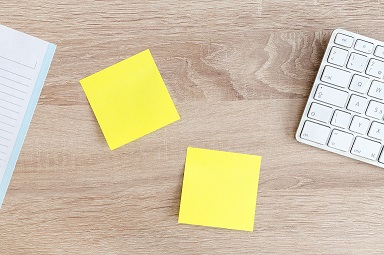
I also have a sticky for my big, overarching to-do list. This breaks my to-do’s down into sections for individual areas of life or projects. I find this more manageable than one crazy, long, unspecific list. If I finish all of my to-do’s (that’s funny), I can look over at my goal sticky and think about what I can add to my to-do list that will take me closer to achieving the next goal.
One final important sticky of mine is my “You Are Incredible As You Are Now” note. Here, I list all of the things I currently am doing or things about myself that I am proud of as a reminder that I do “enough.” I stole this idea from one of my friends in the middle of a hectic, stressful college semester. It’s very easy for all of us to get down on ourselves and feel as if we haven’t accomplished enough yet. But all that matters is that you’re moving forward! I think everyone can benefit from having an uplifting reminder that they are already enough. Keeping these positive affirmations present will help your motivation levels in the best way.

Obviously, you don’t have to use Stickies for this. Actually, Apple has said they will not be updating the application or creating it for mobile devices, so there are probably better options out there! This is just the one that works for me. The important thing is having all of your goals written in one place that you see often.
2. MAKING IT A HABIT
My next favorite thing, which I use for achieving short-term goals, is my flat monthly calendar. This part could also be done in the month section of a planner or in a digital calendar.
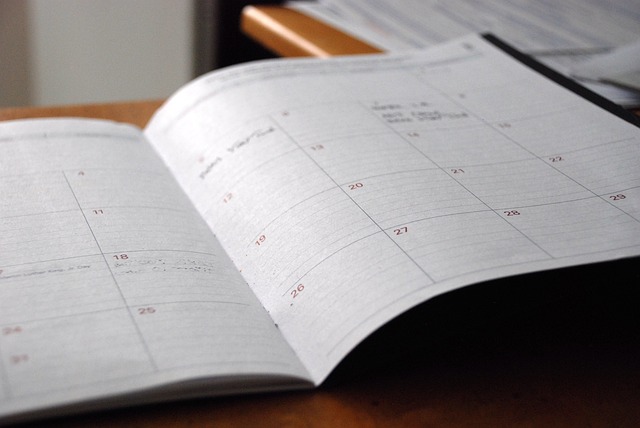
Each month, I decide on a few tasks I want to aim to do every day. Choose these tasks based on something you want to achieve in the near future. I break them down into categories, and usually include a personal task, professional task and a health task. For example, last month I aimed to journal, apply for at least one job, and eat at least two servings of vegetables each day. If you have a project you’re trying to get off the ground running, make it your goal to work on it every day. For me, each category has a shape or symbol, like a triangle, star or squiggly line. Each day that I complete the task in the specific category, I draw a really small symbol on that day on my calendar. So, at the end of the month, I can count all of the tiny squiggly lines and see how many days I ate my vegetables!

This acts as a record to hold you accountable (you’ll feel bad if you only get 3/31 days) and show you the progress you’ve made. Again, it’s just as important to be proud the things you’ve already done as it is to keep doing them!
3. ENVISION IT
This one is a little more straight-forward and a tried and true method. Vision boards are super fun, and something for the more creative types who may not be crazy about all of my structured list-making methods.
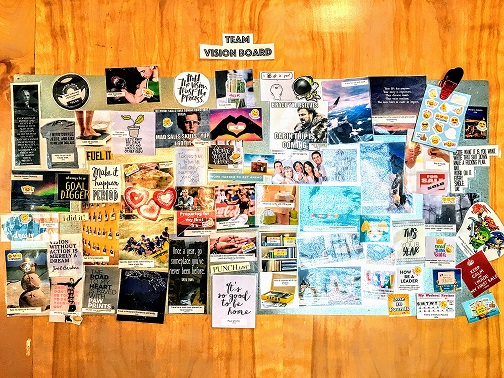
However, here at Radius Online, the employees have added a fun twist to their vision board that I love. They add a sticker on top of their goal image when they accomplish it instead of removing it altogether to make room for the next thing. Did I mention yet how important it is to be reminded of what you’ve accomplished already? 🙂

4. ACHIEVE YOUR DREAMS BY TALKING TO PEOPLE
Finally, the best way to hold yourself accountable for your goals is to mention them to people. I’m not saying to tell your mom to call you every morning and yell at you until you go to the gym. Simply bring your passions and goals up in conversation when it’s appropriate. This serves a few purposes. First, it makes you interesting. People like people who like to do things. Second, it’s more embarrassing when you don’t do that 5K at Thanksgiving if you’ve told 10 people that you were striving to finish it. And lastly, you may meet someone who has a similar goal, inspire someone to take one on, or make someone think of you for an opportunity in the future relating to that goal. Basically, you could make an awesome connection.

Lastly, I’ll leave you with this: FEAR. I believe that this pesky four letter word is the sole thing holding many of us back from achieving our goals. There is a healthy place for fear in our lives. It keeps us from swimming in the ocean at dusk, sticking forks into electrical sockets and drinking milk if we’re lactose intolerant. However, there is no room for fear in the space where your dreams and ambitions lie.
The amateur novelist J.K. Rowling once said, “It is impossible to live without failing at something, unless you live so cautiously that might as well not lived at all. In which case, you’ve failed by default.” Base your self-worth not on your ability to succeed at everything, but at your willingness to try anything. If you get over the mental battle and learn to approach goal chasing with this mindset- one that embraces failure and recognizes it as a chance to learn- you are already on your way to achieving that big dream.
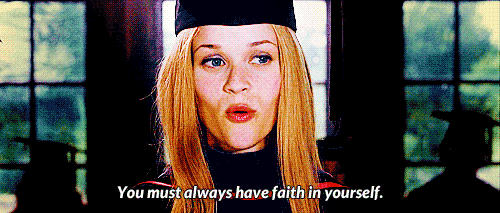
Happy goal chasing and fear facing!
Keeping Track of Life
As an intern who is also wrapping up my final semester of school, keeping up with daily must do’s has become a challenging task. Staying on top of school assignments, projects at work, and still being social (if/when time permits) can at times seem like a juggling act. Below are some tips that have helped me manage my time so I can stay on top of assignments and still have time on the weekends for fun.
Keep a Calendar
If you don’t already have one, create a Google calendar- like right now. This has been my most valuable tool for the last four years of my college life. Anything and everything goes into my Google calendar. Events are color coded so I can quickly see if I have any school assignments due, important meetings at work, or if there is a concert coming up that I don’t want to miss. If a particular event is really important, set up a reminder for it.
Make a Weekly To-do List
Making a weekly to-do list ensures that no assignment gets overlooked. Decide when you need to start working on an assignment so you aren’t working on it last minute. Weekly to-do lists are good for when I feel completely overwhelmed by everything I have to do in one week. Writing out everything I have to do in a daily format breaks down all of my seemingly impossible weekly tasks, and makes them seem more feasible. Typically I only have 2-3 assignments/tasks I have to focus on each day, which is easier to digest than constantly thinking about the 20+ things you must do by the end of the week.
Make Time for Mental Break
For me- having a mental break is vital when working on tasks that are mentally draining. I like to recharge by going to the park, exercising in the gym, grabbing coffee with a friend, or getting in a quick bike ride. Taking a mental break is good because when I do come back to my work, I feel great, and I can devote 100% of my energy towards the task at hand. Sometimes I get so busy I seemingly have no time for a mental break. In these situations, I find that by not taking a break the quality of my work suffers, and it takes me longer to complete tasks. Now I make sure to take a mental break when I need it no matter how little time I have. Just 10 minutes of meditation can make a notable difference in the quality of my work.
When things get crazy, just remember that you can get through it all. Sometimes you may need to isolate yourself in a study area like you are in Fort Knox, but hard work pays off. There is nothing more satisfying than crossing items off your to-do list and being free for the weekend.
Final Note: Don’t Get So Stressed That You Start Throwing Pizza On Roofs

…just don’t do it. Eventually you will have to get on a ladder to clean the mess you have made- not to mention the perfectly good pizza that will be spoiled in the process.
Making an AdWords Campaign
Making a Google AdWords campaign can seem like a daunting task, especially if your industry offers many products or services. Below is a guide to help you make sense of it all when building your first AdWords campaign.
Know the structure-
Before reading any further, make sure you understand how AdWords is structured. Listed below is a picture detailing the process, but in a few words, an AdWords account has one or more campaigns. Within campaigns are ad groups which contain keywords and ads.
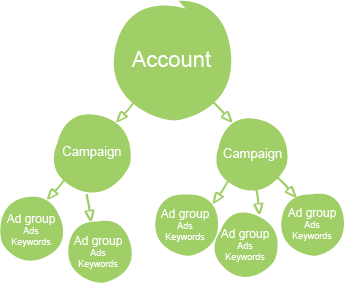
Work from the top down-
When building a new AdWords account, start working on campaigns first, and then work towards keywords and ads. The first decision you have to make is how will you structure your campaigns. Some accounts may have no need for multiple campaigns, which makes this step easy. Other accounts may need to have multiple campaigns for targeting different geographic regions, advertising different groups of products/services, or campaigns may be structured by budget. Decide how you are going to structure your campaigns, name them and then get ready to build ad groups.
Ad Groups-
Most of the time, it is best to divide ad groups into various products/services that your company offers. You will surprise yourself with how many ad groups can go in one campaign! Make sure that you cover all product/service offerings available in your industry that users may be searching for.
Keywords-
When building a keyword list, make sure to research your keywords in Google’s keyword planner, which is found within AdWords. The keyword planner will give you an idea of which keywords will work best for your strategy, and how much you should bid for them. Make sure you don’t glance over negative keywords- they can make (or break) your campaign.
Ads-
This is my personal favorite part of building an AdWords campaign. Before writing any ad copy, analyze your landing page(s). Are there any promotions, unique selling propositions, or anything else that makes you stand out from the competition? If so, make sure that they make it into your ad copy. In my experience, promos in the ad copy is a great way to get people to click your ad. When you write your ad copy, you need to ask yourself a few questions:
When you write your ad copy, you need to ask yourself a few questions:
1)Am I going to use branded keywords in the headline or description?
2)What is the user looking for? How can I engage with them?
3)Understand why your customers are searching. Are your customers shopping around on the web, looking for a local service, or are they ready to buy now?
4)What problem does our product/service solve? Sometimes it’s best to highlight the problem that users are looking to solve

After you have asked yourself these questions, it is time to start writing ad copy. Make sure that your ad’s message is relevant to the keywords found within the ad group. This ensures that your ad is relevant to search queries that show your ad. It is good to keep in mind that slight changes in an ad can result in drastically different performance in terms of click-through-rate- or even conversions. It is good to have a few different variations of an ad, so you can see how they both perform side-by-side. Ultimately, you will need to revisit your ads to tweak them to optimise the performance of your campaign.
And there you have it! follow these steps, and you are sure to be well on your way to making a successful ad campaign.
Searching for an Internship
Landing your first internship can be an arduous task. When I was searching for my first internship, I often times felt as if I was on a conquest for the holy grail. Luckily there are some tips that can help you land an internship at a great company.
Polishing your Resume
Before you surf the classifieds, make sure that your resume reflects any skills that future employers may be interested in. If you don’t have any work experience in the industry that you are seeking a position in, this may be challenging. Take the time to think about what you can highlight about what your past work history that is worth mentioning. If you were hiring an intern for the position you are applying for, what skills would you look for?
Decide What You Are Searching For (and Stick To It)
Looking to work with a Fortune 500 company with a massive ad spend? Or perhaps something not so corporate better suits your preference. Whatever you are aiming for, write down the qualities of your ideal company to work for. Decide which qualities you are firm on and which ones are flexible. When you see a company is hiring, ask yourself, “Is this the company for me?” Not all internships are worth your time. Being selective about which companies you choose to apply to will save a lot of time and headache in the long run.

Navigating the Jungle
After you have decided what kind of company you would like to work for, create a list of specific companies that you think would be a good fit. A company’s Linkedin profile and social media can usually give you a good idea of what it is like to work there. Smaller companies will usually post all of their open positions on their site as well as a 3rd party site like indeed.com. If a company that you wish to work for is currently hiring, then awesome- send them your resume and cover letter (more on that later). If they aren’t hiring, still send them your resume and cover letter. Explain in your cover letter that you understand that they aren’t currently hiring, but you are interested in working for them, and make sure to mention what position you are interested in. Following this strategy will ensure that you find an internship that fits your needs.
Check Your Network
I know you are sick and tired of hearing about the importance of networking, but there is no quicker way to find employment than to network with people who are currently employed. Put a post on social media that you are looking for a job in a specific field. You never know who may work at a company that you are interested in.
The Cover Letter
This, in my opinion, is the most important part of the application process. If the listing says that cover letters are optional, I am here to tell you that they aren’t. A cover letter is your first initial impression with the hiring manager. Botch this and your resume won’t get a single glance. Your cover letter should do all of the following:
-Showcase your writing skills
-Convey why you are interested in both the position and the company
-Elaborate on some skills listed in your resume
-Show some personality
One last thing I would like to mention about your cover letter is to keep them short! I was taught in my business writing class that cover letters are 1000+ word documents that are to be signed in blood and sent by carrier pigeon. This is no longer the case. Ensure that your cover letter is concise. Once I shortened my cover letter from a full page of text to three short (2-3 sentence) paragraphs, I started to get a lot more inquiries from hirers.
Keeping Tabs
Make sure that you have a list of places you have applied to. I like to send a follow-up email if I haven’t heard back from a hiring rep after about two weeks. Many hiring reps are excited to see that you have initiative, and they may re-visit your resume and decide to call you even if they passed on your resume.
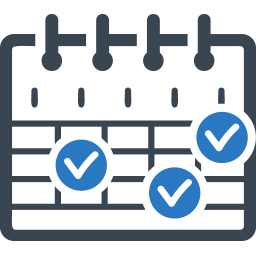
Set a Schedule
How many jobs are you going to apply to each week? When are you going to search for jobs, write cover letters, and send out applications? Understand that applying for an internship takes a lot of time. It may be necessary to cut back on your hours at your current job (if you have one) to allow enough time to send out applications.
Keep At It
I have talked with students that applied to 50+ companies before they ever got hired. If you feel burned out from looking for an internship, ask yourself if you can improve your resume or cover letter, or if you can be more flexible about what kind of company you are looking for. If you keep pushing, you will get the job you are looking for. If you are in need of a boost of inspiration, please click to watch the video featuring my personal life mentor, Bicycle Kid. His sage words of wisdom will surely give you the boost you need to get back on track.